Books
Details of leading books and reports and presenting up-to-date knowledge of the state-of-the-art energy efficient technologies adopted and practiced in plants and mills in India and the world over; policies/ strategies for adopting high energy efficiency standards and also presents world's leading journals containing articles written by researchers, industry experts, professors for academic and technical audience.

Towards a Low Carbon Steel Sector: Overview of the Changing Market, Technology, and Policy Context for Indian Steel
- Author - Will Hall, Thomas Spencer, Sachin Kumar
- Publisher – The Energy and Resources Institute
- Pages and Year - 14 p. 2020
This report presents an initial overview of the Indian steel sector and the options to mitigate its impact on the environment, through reducing emissions. This report takes the step in consultation process with the steel sector, government, research community and civil society, which will ultimately lead towards a comprehensive roadmap to decarbonisation for the steel sector
Read MoreSteel Import Monitoring System (SIMS) : Report on import registrations till May 2020
- Publisher – Ministry of Steel, Govt. of India
- Pages and Year - 15 p. 2020
Steel Import Monitoring System (SIMS). This report includes data of steel import registrations since 1st November 2019.
Read MoreThe State–of-the-Art Clean Technologies (SOACT) for Steelmaking Handbook (2nd Edition)
- Author - Ali Hasanbeigi, Lynn K Price, Aimee T McKane
- Publisher – Lawrence Berkeley National Laboratory and American Iron and Steel Institute, Asia-Pacific Partnership on Clean Development and Climate
- Pages and Year - 138 p. 2010
The State–of-the-Art Clean Technologies (SOACT) for Steelmaking Handbook seeks to catalog the best available technologies and practices to save energy and reduce environmental impacts in the steel industry. Its purpose is to share information about commercialized or emerging technologies and practices that are currently available to increase energy efficiency and environmental performance between all the member countries in the Asia-Pacific Partnership on Clean Development and Climate.
Read More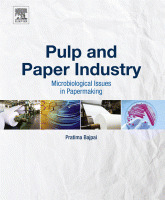
Pulp and Paper Industry : Microbiological Issues in Papermaking
- Author - Pratima Bajpai
- Publisher – Elsevier
- Pages and Year - 226 p. 2016
Pulp and Paper Industry: Microbiological Issues in Papermaking features in-depth and thorough coverage of microbiological issues in papermaking and their consequences and the current state of the different alternatives for prevention, treatment and control of biofilm/slime considering the impact of the actual technological changes in papermaking on the control programmes.
Read More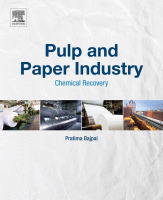
Pulp and Paper Industry : Chemical Recovery
- Author - Pratima Bajpai
- Publisher – Elsevier
- Pages and Year - 260 p. 2016
Pulp and Paper Industry: Chemical Recovery examines the scientific and technical advances that have been made in chemical recovery, including the very latest developments. It looks at general aspects of the chemical recovery process and its significance, black liquor evaporation, black liquor combustion, white liquor preparation, and lime reburning.The book also describes the technologies for chemical recovery of nonwood black liquor, as well as direct alkali regeneration systems in small pulp mills.
Read More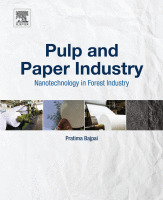
Pulp and Paper Industry : Nanotechnology in Forest Industry
- Author - Pratima Bajpai
- Publisher – Elsevier
- Pages and Year - 258 p. 2017
Pulp and Paper Industry: Nanotechnology in Forest Industry covers the latest scientific and technical advances in the area of nanotechnology in forest sector providing information on recent developments, structure and properties, raw materials and methods for the production of nanocellulose along with their characterization and application in various industries with an analysis of both challenges and opportunities with respect to environmentally sound technologies and consumer concerns such as health effects.
Read More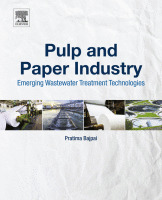
Pulp and Paper Industry : Emerging Waste Water Treatment Technologies
- Author - Pratima Bajpai
- Publisher – Elsevier
- Pages and Year - 228 p. 2017
This book discusses various measures being adopted by the pulp and paper industry to reduce water consumption and treatment techniques to treat wastewater to recover it for reuse. The book also examines the emerging technologies for treatment of effluents and presents examples of full-scale installations.
Read More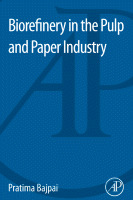
Biorefinery in the Pulp and Paper Industry
- Author - Pratima Bajpai
- Publisher – Academic Press
- Pages and Year - 114 p. 2013
Biorefinery in the Pulp and Paper Industry presents the biorefining concept, the opportunities for the pulp and paper industry, and describes and discusses emerging biorefinery process options. This book also highlights the environmental impact and the complex and ambiguous decision-making challenges that mills will face when considering implementing the biorefinery.
Read More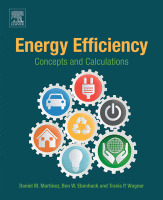
Energy Efficiency : Concepts and Calculations
- Author - Daniel M. Martínez, Ben W. Ebenhack and Travis P. Wagner
- Publisher – Elsevier Science
- Pages and Year - 326 p. 2018
Energy Efficiency: Concepts and Calculations is the first book of its kind to provide an applied, systems oriented description of energy intensity and efficiency in modern economies across the entire energy chain. With an emphasis on analysis, specifically energy flow analysis, lifecycle energy accounting, economic analysis, technology evaluation, and policies/strategies for adopting high energy efficiency standards, the book provides a comprehensive understanding of the concepts, tools and methodologies for studying and modeling macro-level energy flows through, and within, key economic sectors (electric power, industrial, commercial, residential and transportation)
Read More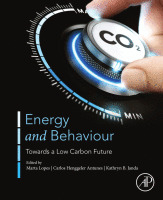
Energy and Behaviour:Towards a Low Carbon Future
- Author - Marta Lopes, Carlos Henggeler Antunes and Kathryn B. Janda (ed.)
- Publisher – Academic Press
- Pages and Year - 558 p. 2019
This book, developed by a diverse range of experts, presents an international and multi-faceted approach to the sociotechnical challenge of engaging people in energy systems and vice versa. By providing a multidisciplinary view of this field, it encourages critical thinking about core theories, quantitative and qualitative methodologies, and policy challenges. It concludes by addressing new areas where additional evidence is required for interventions and policy-making.It is designed to appeal to new entrants in the energy-efficiency and behaviour field, particularly those taking a quantitative approach to the topic.
Read More